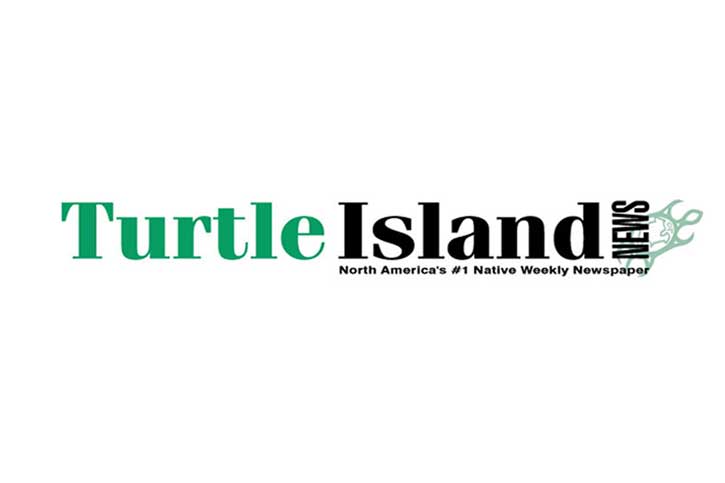
The Enduring Pulse: Community Newspapers on Turtle Island’s Front Lines
In an age often declared the "post-truth" era, where global digital currents threaten to drown out local voices, community newspapers on Turtle Island stand as defiant, indispensable pillars. Far from being relics of a bygone era, these hyper-local publications, from the bustling suburbs to the remote Indigenous territories, are not merely surviving; they are actively shaping local democracies, preserving cultures, and forging identities with a resilience that belies their often-modest circulations. They are the collective memory, the public forum, and the accountability mechanism for countless communities across North America, proving that news, at its most fundamental, remains deeply rooted in the ground beneath our feet.
The core strength of the community newspaper lies in its unwavering commitment to the local. While national and international media chase geopolitical dramas and market fluctuations, the community paper chronicles the school board meeting, the high school football game, the town council debate, the annual fall fair, and the obituaries that connect generations. This isn’t just "small news"; it is the fabric of daily life, the information critical for civic engagement, social cohesion, and individual well-being. These papers cover the stories that no other outlet will, creating an essential historical record and a living archive of local life. They are often the first to report on local environmental concerns, infrastructure projects, or shifts in community demographics, providing insights that directly impact residents’ lives in ways a national broadcast never could.
This hyper-local focus fosters an unparalleled level of trust. In an environment saturated with misinformation and partisan divides, community newspapers, by and large, maintain a reputation for factual reporting and direct relevance. Their journalists live in the communities they cover; they shop at the same stores, send their children to the same schools, and interact with the people whose stories they tell. This embeddedness creates a unique bond and a heightened sense of responsibility. When a local paper reports on a zoning dispute or a community fundraiser, its readers know the stakes are real and directly applicable to their lives. This proximity builds a reservoir of credibility that larger, more distant media outlets often struggle to achieve.
Nowhere is this vital role more pronounced than within the Indigenous communities scattered across Turtle Island. For centuries, Indigenous peoples have faced systemic silencing, misrepresentation, and erasure by mainstream media. The emergence and sustained growth of Indigenous community newspapers and media outlets represent a powerful act of self-determination, a reclamation of narrative, and a critical tool for cultural and linguistic preservation. Publications like Windspeaker (Canada), Nunatsiaq News (Nunavut), The Eastern Door (Kahnawake Mohawk Territory), and Indian Country Today (US) are not just newspapers; they are vital cultural institutions.
These Indigenous presses serve multiple, interconnected purposes. First, they provide a platform for Indigenous voices to tell their own stories, in their own words, from their own perspectives. This is crucial for countering stereotypes and challenging dominant narratives that have historically marginalized Indigenous experiences. They report on land claims, treaty rights, self-governance initiatives, the ongoing crisis of Missing and Murdered Indigenous Women, Girls, and Two-Spirit People (MMIWG2S+), and the myriad social and economic challenges and triumphs facing their communities – issues often overlooked or poorly understood by mainstream media. As the late Mark Trahant, a distinguished journalist and member of the Shoshone-Bannock Tribes, once articulated, Indigenous media ensures "our stories are told with nuance and understanding, not just as footnotes to someone else’s history."

Second, many Indigenous newspapers are instrumental in the revitalization and preservation of Indigenous languages. Publishing articles, stories, and even entire sections in languages like Inuktitut, Mohawk, Cree, or Ojibwe, they become living textbooks and daily affirmations of cultural identity. This is particularly critical for younger generations, offering a tangible connection to their heritage and an accessible resource for language learning. Nunatsiaq News, for instance, publishes in both English and Inuktitut, reflecting the linguistic reality of Nunavut and ensuring vital information reaches all residents in their preferred language. This linguistic dedication reinforces cultural pride and resilience in the face of historical assimilationist policies.
Third, Indigenous newspapers foster community cohesion and accountability. In often geographically dispersed or politically complex communities, these papers act as central hubs for information sharing, celebrating achievements, mourning losses, and facilitating public dialogue. They hold local Indigenous governments and organizations accountable, providing a crucial check on power within their own nations. They connect urban Indigenous populations with their home communities, ensuring that cultural ties remain strong despite physical distance. This internal focus strengthens self-governance and reinforces communal bonds.
Beyond the Indigenous press, community newspapers in predominantly non-Indigenous small towns and rural areas across Turtle Island face similar challenges and exhibit comparable resilience. Many of these towns are what researchers term "news deserts," areas where local news coverage has dwindled or disappeared entirely due to the collapse of traditional business models for larger papers. In these spaces, the local weekly or bi-weekly paper often remains the sole source of original local reporting, filling a critical void for civic engagement. Without them, local government meetings might go unscrutinized, local elections might lack informed voters, and community events might pass unnoticed.
These papers are not immune to the seismic shifts in the media landscape. They grapple with declining print advertising revenues, the rise of digital competitors, and the challenge of attracting and retaining journalists in smaller markets. Yet, many have adapted, embracing hybrid models that combine print editions with robust online presences, active social media engagement, and innovative funding strategies including reader donations, non-profit models, and local business sponsorships. Their survival often hinges on strong community support and a recognition from local advertisers that reaching a highly targeted, engaged local audience is invaluable.
The future of community newspapers on Turtle Island, both Indigenous and non-Indigenous, is not one of impending obsolescence but of continuous evolution. They are living proof that authentic, relevant, and trusted local news remains an essential public service. In an era characterized by global interconnectedness, the community newspaper provides an anchor, grounding individuals in their immediate surroundings and fostering a sense of belonging and shared purpose. They stand as guardians of local narratives, champions of civic discourse, and vital catalysts for community development. As long as people care about their neighbors, their schools, their local governments, and their cultural heritage, the pulse of the community newspaper will continue to beat strongly across the vast and diverse expanse of Turtle Island. Their enduring presence is a testament to the fundamental human need for connection, information, and a voice in the stories that truly define home.



